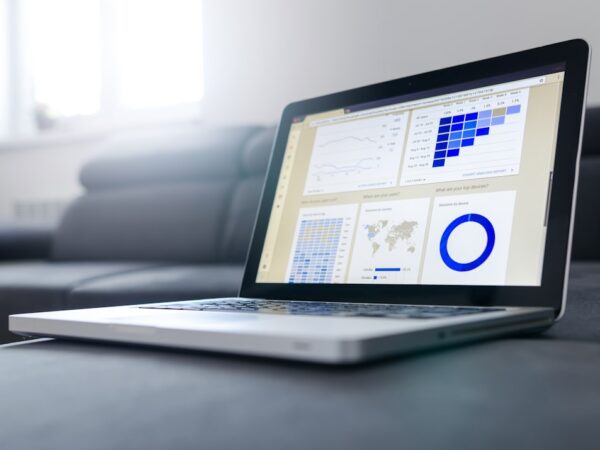
Mastering the Fundamentals: Your Ultimate Economics Study Guide
Economics is a field of study that examines how individuals, businesses, and governments make choices about how to allocate resources. It is often referred to as the “science of scarcity” because it deals with the fundamental problem of unlimited wants and needs in a world of limited resources. Understanding economics is crucial in everyday life because it helps us make informed decisions about how to best use our resources, whether it be our time, money, or other assets.
Key Takeaways
- Economics is the study of how individuals, businesses, and governments allocate resources to satisfy their needs and wants.
- Supply and demand are the driving forces behind market prices and determine the quantity of goods and services produced and consumed.
- Markets play a crucial role in economic systems by facilitating the exchange of goods and services and promoting competition.
- Government policies can have a significant impact on the economy, including taxes, subsidies, and regulations.
- Microeconomics focuses on individual decision-making and behavior, while macroeconomics examines the overall performance of the economy.
Understanding the Basics: What is Economics?
Economics can be defined as the study of how individuals and societies allocate scarce resources to satisfy their unlimited wants and needs. It involves analyzing the production, distribution, and consumption of goods and services. Key concepts and principles in economics include supply and demand, opportunity cost, marginal analysis, and market equilibrium.
There are several branches of economics that focus on different aspects of the economy. Microeconomics examines the behavior of individual consumers and firms, while macroeconomics looks at the overall performance of the economy as a whole. Other branches include international economics, labor economics, and environmental economics.
The Role of Supply and Demand in Economics
Supply and demand are fundamental concepts in economics that determine prices and quantities in a market economy. Supply refers to the quantity of a good or service that producers are willing and able to sell at a given price, while demand refers to the quantity of a good or service that consumers are willing and able to buy at a given price.
When supply exceeds demand, prices tend to fall as producers compete for customers. On the other hand, when demand exceeds supply, prices tend to rise as consumers compete for limited goods or services. The interaction between supply and demand ultimately determines the equilibrium price and quantity in a market.
Examples of supply and demand in action can be seen in everyday life. For instance, when there is a shortage of a particular product, such as during a natural disaster, the price of that product may increase as demand exceeds supply. Conversely, when there is an oversupply of a product, such as during a seasonal sale, the price may decrease as producers try to sell off excess inventory.
The Importance of Markets in Economic Systems
| Metrics | Description |
|---|---|
| Gross Domestic Product (GDP) | The total value of goods and services produced in a country, which is a measure of the size of the economy. |
| Employment | The number of people who are employed in a country, which is a measure of the health of the labor market. |
| Consumer Price Index (CPI) | A measure of the average change in prices over time of goods and services consumed by households. |
| Foreign Direct Investment (FDI) | The investment made by a company or individual in a foreign country, which is a measure of the attractiveness of a country’s market. |
| Trade Balance | The difference between a country’s exports and imports, which is a measure of the competitiveness of a country’s market. |
Markets play a crucial role in economic systems by facilitating the exchange of goods and services. A market can be defined as any arrangement that allows buyers and sellers to come together and engage in trade. It can take various forms, such as a physical location like a farmer’s market or an online platform like Amazon.
There are different types of markets, including perfectly competitive markets, monopolistic markets, and oligopolistic markets. In a perfectly competitive market, there are many buyers and sellers who have no control over the price. In a monopolistic market, there is only one seller who has significant control over the price. In an oligopolistic market, there are a few sellers who have some control over the price.
Markets allocate resources by determining prices based on supply and demand. When prices are high, it signals that resources are scarce and should be allocated to their most valuable uses. When prices are low, it signals that resources are abundant and can be allocated to less valuable uses. This price mechanism helps ensure that resources are allocated efficiently and effectively.
The Impact of Government Policies on the Economy
Government policies can have a significant impact on the economy by influencing various aspects such as taxes, regulations, and spending. There are different types of government policies, including fiscal policy, monetary policy, and trade policy.
Fiscal policy refers to the use of government spending and taxation to influence the economy. For example, during an economic downturn, the government may increase spending or reduce taxes to stimulate economic activity. Conversely, during periods of inflation or excessive growth, the government may reduce spending or increase taxes to cool down the economy.
Monetary policy refers to the actions taken by a central bank to control the money supply and interest rates. For example, a central bank may increase interest rates to curb inflation or decrease interest rates to stimulate borrowing and investment.
Trade policy refers to the regulations and agreements that govern international trade. Governments can impose tariffs, quotas, or other trade barriers to protect domestic industries or promote certain industries. These policies can have both positive and negative effects on the economy, depending on the specific circumstances.
Examples of government policies and their impact can be seen throughout history. For instance, during the Great Depression in the 1930s, governments around the world implemented various policies to stimulate economic growth and reduce unemployment. These policies included increased government spending on public works projects and the implementation of social welfare programs.
The Fundamentals of Microeconomics
Microeconomics focuses on the behavior of individual consumers and firms and how they interact in markets. It examines how individuals make decisions about what to buy, how much to work, and how much to save. It also looks at how firms make decisions about what to produce, how much to produce, and at what price to sell their products.
Key concepts and principles in microeconomics include opportunity cost, marginal analysis, and market structures. Opportunity cost refers to the value of the next best alternative that is forgone when a choice is made. For example, if you choose to spend your money on a vacation, the opportunity cost is the value of the next best alternative, such as buying a new car.
Marginal analysis involves examining the additional benefits and costs of a decision. For example, if a firm is considering whether to produce one more unit of a product, it will compare the additional revenue from selling that unit with the additional cost of producing it.
Market structures refer to the characteristics of a market that determine how firms behave and how prices are determined. Examples of market structures include perfect competition, monopolistic competition, oligopoly, and monopoly. Each market structure has different implications for pricing, output, and competition.
The Fundamentals of Macroeconomics
Macroeconomics looks at the overall performance of the economy as a whole. It examines variables such as gross domestic product (GDP), inflation, unemployment, and interest rates. Macroeconomists study how these variables interact and how they are influenced by government policies and other factors.
Key concepts and principles in macroeconomics include aggregate demand and aggregate supply, fiscal policy, monetary policy, and economic growth. Aggregate demand refers to the total demand for goods and services in an economy at a given price level. Aggregate supply refers to the total supply of goods and services in an economy at a given price level.
Fiscal policy and monetary policy, as discussed earlier, are tools used by governments and central banks to influence the economy. Fiscal policy involves changes in government spending and taxation, while monetary policy involves changes in the money supply and interest rates.
Economic growth refers to an increase in the production of goods and services over time. It is typically measured by changes in real GDP. Macroeconomists study the factors that contribute to economic growth, such as technological progress, investment, and productivity.
The Role of International Trade in Economics
International trade refers to the exchange of goods and services between countries. It allows countries to specialize in producing goods and services that they have a comparative advantage in, and then trade with other countries for goods and services that they do not produce efficiently.
There are several benefits of international trade. It allows countries to access a wider variety of goods and services at lower prices. It also promotes economic growth by increasing productivity and efficiency. Additionally, international trade can lead to cultural exchange and cooperation between countries.
However, there are also drawbacks to international trade. It can lead to job displacement in certain industries as production shifts to countries with lower labor costs. It can also lead to income inequality within countries if the benefits of trade are not distributed evenly.
Examples of international trade in action can be seen in the global supply chains of multinational corporations. For instance, a company may design a product in one country, source raw materials from another country, and manufacture the product in yet another country. The finished product may then be sold in multiple countries around the world.
The Economics of Labor and Employment
Labor and employment economics focuses on the behavior of workers and employers in the labor market. It examines factors such as wages, employment levels, and labor market policies. Labor economists study how these factors are influenced by supply and demand, education and training, and government regulations.
Key concepts and principles in labor and employment economics include labor supply and demand, human capital, and labor market discrimination. Labor supply refers to the number of workers who are willing and able to work at a given wage rate. Labor demand refers to the number of workers that firms are willing and able to hire at a given wage rate.
Human capital refers to the skills, knowledge, and experience that workers possess. It is an important determinant of wages and employment opportunities. Workers with higher levels of human capital tend to earn higher wages and have better job prospects.
Labor market discrimination refers to the differential treatment of individuals based on characteristics such as race, gender, or age. It can lead to unequal outcomes in terms of wages, employment opportunities, and job satisfaction.
Examples of labor and employment economics in action can be seen in debates over minimum wage laws, equal pay for equal work, and workplace safety regulations. These issues often involve trade-offs between economic efficiency and social equity.
The Relationship Between Money and Inflation
Inflation refers to a sustained increase in the general price level of goods and services over time. It erodes the purchasing power of money and can have significant economic consequences. Understanding the relationship between money and inflation is crucial for policymakers and individuals alike.
Money supply is one of the key factors that influence inflation. When the money supply increases faster than the growth in output, it can lead to inflation. This is because there is more money chasing the same amount of goods and services, which drives up prices.
However, the relationship between money supply and inflation is not always straightforward. Other factors, such as changes in productivity, expectations, and government policies, can also influence inflation. For example, if productivity increases, it can lead to lower production costs and lower prices, even if the money supply remains constant.
Examples of inflation and its impact can be seen in historical episodes such as hyperinflation in Zimbabwe and Germany. These extreme cases of inflation led to skyrocketing prices, economic instability, and social unrest. Inflation can also have more subtle effects on individuals and businesses, such as eroding savings and distorting investment decisions.
The Future of Economics: Emerging Trends and Technologies
The field of economics is constantly evolving as new trends and technologies emerge. These developments have the potential to revolutionize the way we study and understand the economy.
One emerging trend in economics is the use of big data and advanced analytics. With the increasing availability of large datasets and powerful computational tools, economists can analyze economic phenomena at a much finer level of detail. This allows for more accurate predictions and better policy recommendations.
Another emerging trend is the integration of behavioral economics into mainstream economic analysis. Behavioral economics combines insights from psychology with traditional economic theory to better understand how individuals make decisions. This has important implications for areas such as consumer behavior, savings, and investment.
Technological advancements such as artificial intelligence (AI) and blockchain technology are also likely to have a significant impact on economics. AI can automate routine tasks and improve decision-making processes, while blockchain technology has the potential to revolutionize financial transactions and contracts.
Examples of emerging trends and technologies in action can be seen in the rise of online platforms such as Uber and Airbnb, which have disrupted traditional industries and changed the way we think about work and consumption. These platforms rely on advanced algorithms and data analytics to match supply and demand efficiently.
In conclusion, economics is a field of study that is essential for understanding how individuals, businesses, and governments make choices about how to allocate resources. It encompasses a wide range of topics, from supply and demand to labor and employment economics. Understanding economics is crucial in everyday life because it helps us make informed decisions about how to best use our resources.
Supply and demand play a central role in economics by determining prices and quantities in a market economy. Markets allocate resources by determining prices based on supply and demand. Government policies can have a significant impact on the economy by influencing variables such as taxes, regulations, and spending.
Microeconomics focuses on the behavior of individual consumers and firms, while macroeconomics looks at the overall performance of the economy as a whole. International trade, labor and employment economics, and the relationship between money and inflation are also important areas of study in economics.
The future of economics is likely to be shaped by emerging trends and technologies such as big data analytics, behavioral economics, AI, and blockchain technology. These developments have the potential to revolutionize the way we study and understand the economy.
In conclusion, continued learning and understanding of economics is crucial for individuals, businesses, and policymakers alike. It allows us to make informed decisions, navigate economic challenges, and contribute to the overall well-being of society.
Looking for a comprehensive economics study guide? Look no further! Wave Magnets has got you covered. Their website offers a wide range of resources to help you ace your economics exams. And if you’re looking for a sample page to get a taste of what they have to offer, check out their sample page. With Wave Magnets, you’ll have all the tools you need to succeed in your economics studies.
FAQs
What is economics?
Economics is a social science that studies how individuals, businesses, governments, and societies allocate scarce resources to satisfy their unlimited wants and needs.
What are the main branches of economics?
The main branches of economics are microeconomics, which studies the behavior of individuals and firms in making decisions regarding the allocation of resources, and macroeconomics, which studies the performance and behavior of the economy as a whole.
What are the basic concepts of economics?
The basic concepts of economics include scarcity, opportunity cost, supply and demand, market equilibrium, elasticity, marginal analysis, and externalities.
What is the difference between a market economy and a command economy?
In a market economy, the allocation of resources is determined by the interaction of buyers and sellers in the market, while in a command economy, the government controls the allocation of resources.
What is GDP?
GDP stands for Gross Domestic Product, which is the total value of all goods and services produced within a country’s borders in a given period of time, usually a year.
What is inflation?
Inflation is the rate at which the general level of prices for goods and services is rising, and subsequently, purchasing power is falling.
What is the role of government in the economy?
The role of government in the economy is to provide public goods and services, regulate markets, promote economic growth and stability, and redistribute income and wealth.


















